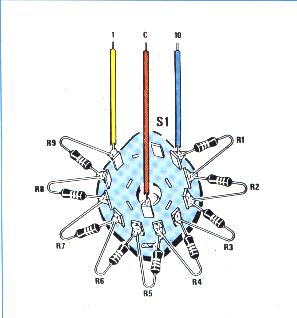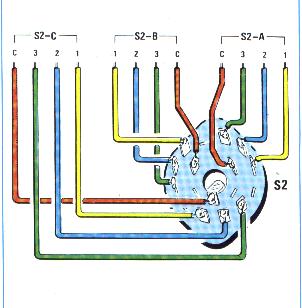
NiCad Battery Analyzer.
How many times happened that you
needed to know the capacity of a battery pack? This is the
biggest problem for modelers. You must keep in mind that a nicad
battery has the capacity declared by the manufacturer only after
a certain amount of charge- discharge cycles. And then after a
while the battery starts loosing capacity as it gets older.
Usually a nicad lasts between 500 and 1000 cycles before the
remaining capacity is unacceptably low. When this will occur
depends from how you will charge and discharge a battery and the
kind of use, the operating temperature etc. For example a battery
employed as power source in an electric car model, thus exposed
to fast charges and discharges and high operating temperature
will last less than a battery used to power the radio
transmitter.. But how long? The only way is to check the capacity
using a battery analyzer. This is a device which discharges the
battery and tells you exactly what is the actual capacity. Then
you can decide safely when is time to bin the pack or still use
it maybe in a less critical model.
This analyzer can test battery packs from 1 to 10 cells, as to
say from 1.2 to 12 volts, and with capacity from 100 mAh to 5000
mAh. It needs a 220V power supply. The use is quite easy. Select
the righ voltage, the right current, connect the battery and push
the start button. When the battery is discharged the analyzer
will report the capacity in mAh on the display. The analyzer has
3 possible capacity: 100mAh for battery from 100 to 600 mAh, 600
mAh for capacity from 600 to 2500 mAh, and 2500 mAh for capacity
from 2500 to 5000 mAh. There are 3 trimmers which needs to be set
up before using the analyzer. The setting is quite easy. Connect
a power supply with an output voltage of exactly 12V and 2,5 A to
the analyzer input. Put a tester set up to current measure
between power supply and analyzer. Set 12V on the analyzer, set
100 mAh of range and turn it on. Push the start button and turn
the trimmer until you read 69 mA on the tester. Set then the 600
mAh range and do the same until you read on the tester exactly
275 mA of current. The same will do for the 2500 mAh and a
readout of 1100 mA. The analyzer is then set up and ready for
use.
This is the electric scheme and list of components of the analyzer


This is how the analyzer looks using the stock PCB. Sorry I don't have this analyzer so can't supply the PCB layout.



This is it. I don't have personally one but some buddies in italy have it and they swear it works fine. If you want to purchase the kit or PCB from the supplier check out the page about the peak charger. The cost of this rig is $80 for the components and PCB, about $15 for the box and $2 for the PCB alone.
This page has been visited
times.